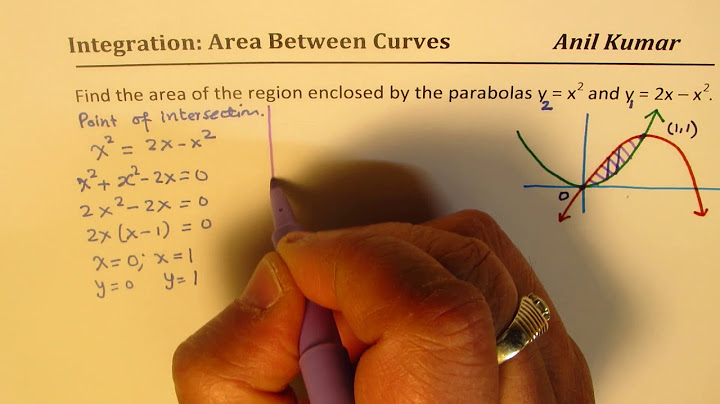The calculator will try to find the critical (stationary) points, the relative (local) maxima and minima, as well as the saddle points of the multivariable function, with steps shown. Show Related calculator: Lagrange Multipliers Calculator Your InputFind and classify the critical points of $$$f{\left(x,y \right)} = 2 x^{2} y - 2 x^{2} + y^{3} - 2 y^{2} + 2$$$. SolutionThe first step is to find all the first-order partial derivatives: $$$\frac{\partial}{\partial x} \left(2 x^{2} y - 2 x^{2} + y^{3} - 2 y^{2} + 2\right) = 4 x \left(y - 1\right)$$$ (for steps, see partial derivative calculator). $$$\frac{\partial}{\partial y} \left(2 x^{2} y - 2 x^{2} + y^{3} - 2 y^{2} + 2\right) = 2 x^{2} + 3 y^{2} - 4 y$$$ (for steps, see partial derivative calculator). Next, solve the system $$$\begin{cases} \frac{\partial f}{\partial x} = 0 \\ \frac{\partial f}{\partial y} = 0 \end{cases}$$$, or $$$\begin{cases} 4 x \left(y - 1\right) = 0 \\ 2 x^{2} + 3 y^{2} - 4 y = 0 \end{cases}$$$. The system has the following real solutions: $$$\left(x, y\right) = \left(0, 0\right)$$$, $$$\left(x, y\right) = \left(0, \frac{4}{3}\right)$$$, $$$\left(x, y\right) = \left(- \frac{\sqrt{2}}{2}, 1\right)$$$, $$$\left(x, y\right) = \left(\frac{\sqrt{2}}{2}, 1\right)$$$. Now, let's try to classify them. Find all the second-order partial derivatives: $$$\frac{\partial^{2}}{\partial x^{2}} \left(2 x^{2} y - 2 x^{2} + y^{3} - 2 y^{2} + 2\right) = 4 y - 4$$$ (for steps, see partial derivative calculator). $$$\frac{\partial^{2}}{\partial y\partial x} \left(2 x^{2} y - 2 x^{2} + y^{3} - 2 y^{2} + 2\right) = 4 x$$$ (for steps, see partial derivative calculator). $$$\frac{\partial^{2}}{\partial y^{2}} \left(2 x^{2} y - 2 x^{2} + y^{3} - 2 y^{2} + 2\right) = 6 y - 4$$$ (for steps, see partial derivative calculator). Define the expression $$$D = \frac{\partial ^{2}f}{\partial x^{2}} \frac{\partial ^{2}f}{\partial y^{2}} - \left(\frac{\partial ^{2}f}{\partial y\partial x}\right)^{2} = - 16 x^{2} + 24 y^{2} - 40 y + 16.$$$ Since $$$D{\left(0,0 \right)} = 16$$$ is greater than $$$0$$$ and $$$\frac{\partial^{2}}{\partial x^{2}} \left(2 x^{2} y - 2 x^{2} + y^{3} - 2 y^{2} + 2\right)|_{\left(\left(x, y\right) = \left(0, 0\right)\right)} = -4$$$ is less than $$$0$$$, it can be stated that $$$\left(0, 0\right)$$$ is a relative maximum. Since $$$D{\left(0,\frac{4}{3} \right)} = \frac{16}{3}$$$ is greater than $$$0$$$ and $$$\frac{\partial^{2}}{\partial x^{2}} \left(2 x^{2} y - 2 x^{2} + y^{3} - 2 y^{2} + 2\right)|_{\left(\left(x, y\right) = \left(0, \frac{4}{3}\right)\right)} = \frac{4}{3}$$$ is greater than $$$0$$$, it can be stated that $$$\left(0, \frac{4}{3}\right)$$$ is a relative minimum. Since $$$D{\left(- \frac{\sqrt{2}}{2},1 \right)} = -8$$$ is less than $$$0$$$, it can be stated that $$$\left(- \frac{\sqrt{2}}{2}, 1\right)$$$ is a saddle point. Since $$$D{\left(\frac{\sqrt{2}}{2},1 \right)} = -8$$$ is less than $$$0$$$, it can be stated that $$$\left(\frac{\sqrt{2}}{2}, 1\right)$$$ is a saddle point. AnswerRelative Maxima$$$\left(x, y\right) = \left(0, 0\right)$$$A, $$$f{\left(0,0 \right)} = 2$$$A Relative Minima$$$\left(x, y\right) = \left(0, \frac{4}{3}\right)\approx \left(0, 1.333333333333333\right)$$$A, $$$f{\left(0,\frac{4}{3} \right)} = \frac{22}{27}\approx 0.814814814814815$$$A Saddle Points$$$\left(x, y\right) = \left(- \frac{\sqrt{2}}{2}, 1\right)\approx \left(-0.707106781186548, 1\right)$$$A, $$$f{\left(- \frac{\sqrt{2}}{2},1 \right)} = 1$$$A $$$\left(x, y\right) = \left(\frac{\sqrt{2}}{2}, 1\right)\approx \left(0.707106781186548, 1\right)$$$A, $$$f{\left(\frac{\sqrt{2}}{2},1 \right)} = 1$$$A How do you find critical numbers of a function?To find any critical numbers of a function, simply take its derivative, set it equal to zero, and solve for x. Any x values that make the derivative zero are critical numbers. Moreover, any x values that make the derivative undefined are also critical numbers.
What are the critical points of f calculator?The Critical Point of the Function of a Single Variable:
The critical points of the function calculator of a single real variable f(x) is the value of x in the region of f, which is not differentiable, or its derivative is 0 (f' (X) = 0).
|

Related Posts
Advertising
LATEST NEWS
Advertising
Populer
Advertising
About

Copyright © 2024 chuyencu Inc.


















